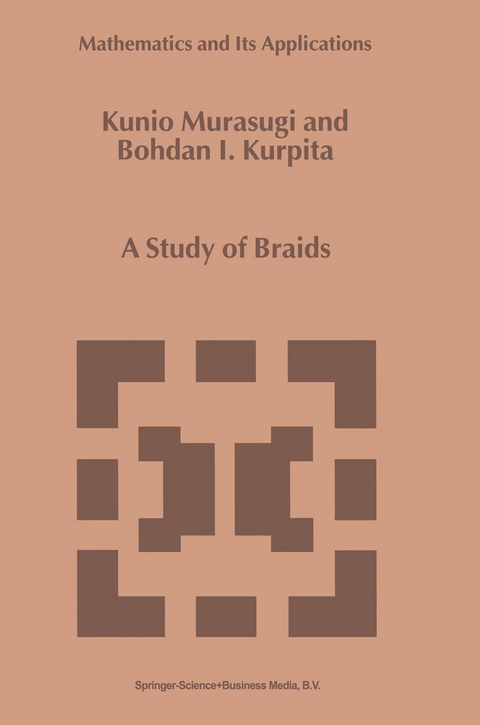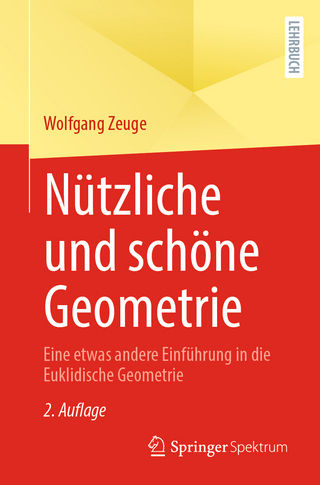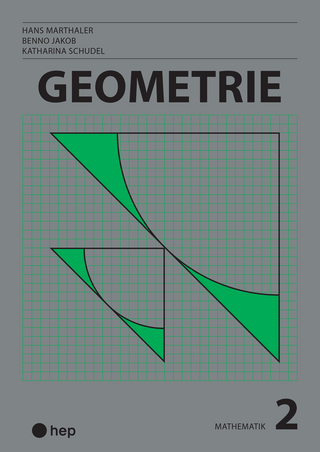
A Study of Braids
Springer (Verlag)
978-0-7923-5767-4 (ISBN)
In Chapter 6, we describe the concept of braid equivalence from the topological point of view. This will lead us to a new concept braid homotopy that is discussed fully in the next chapter. As just mentioned, in Chapter 7, we shall discuss the difference between braid equivalence and braid homotopy. Also in this chapter, we define a homotopy braid invariant that turns out to be the so-called Milnor number. Chapter 8 is a quick review of knot theory, including Alexander's theorem. While, Chapters 9 is devoted to Markov's theorem, which allows the application of this theory to other fields. This was one of the motivations Artin had in mind when he began studying braid theory. In Chapter 10, we discuss the primary applications of braid theory to knot theory, including the introduction of the most important invariants of knot theory, the Alexander polynomial and the Jones polynomial. In Chapter 11, motivated by Dirac's string problem, the ordinary braid group is generalized to the braid groups of various surfaces. We discuss these groups from an intuitive and diagrammatic point of view. In the last short chapter 12, we present without proof one theorem, due to Gorin and Lin [GoL] , that is a surprising application of braid theory to the theory of algebraic equations.
1. Introduction & Foundations.- 1. Various types of braids.- 2. A definition of a braid.- 3. An elementary move and braid equivalence.- 4. Braid projection.- 5. Braid permutation, pure braid.- 2. The Braid Group.- 1. Defunition of the braid group.- 2. A presentation for the braid group.- 3. The completeness of the relations.- 4. Elementary properties of the braid group.- 5. A braid invariant.- 3. Word Problem.- 1. Word problem for the braid group.- 2. A solution of the word problem.- 3. A presentation for the pure n-braid group.- 4. Special types of braids.- 1. Mexicar plaits.- 2. Generators of the Mexican plaits.- 3. An algorithm for Mexican plaits.- 4. Examples of the use of the algorithm.- 5. Quotient groups of the braid group.- 1. Sywumetric group and the braid group.- 2. Platoric solids and quotient groups of Bn.- 3. Finite quotient groups of B3.- 4. The firite quotient group B4(3).- 5. The finite quotient group B5(3).- 6. Isotopy of braids.- 1. Equivalence and isotopy.- 2. Words.- 3. Several interpretations of equivalence.- 4. Milnor invariant.- 7. Homotopy braid theory.- 1. Homotopy.- 2. Tangles and homotopy.- 3. Homotopy braid group.- 4. Homotopy braid invariants.- 5. Tangles and braids.- 8. Grom knots to braids.- 1. Knot theory — a quick review.- 2. Quasi-braids.- 3. Braided links.- 4. Alexander’s theorem.- 5. Knot invariants via braid invariants.- 9. Markov’s theorem.- 1. A theorem due to Markov.- 2. Proof of Markov’s theorem — I.- 3. Proof of Markov’s theorem — II.- 4. Applications.- 10. Knot invariants.- 1. Burau representation.- 2. Alexander polynomial.- 3. Jones polynomial.- 4. Alexander versus Jones.- 11. Braid groups on surfaces.- 1. Divac’s Problem.- 2. Braid group on S2.- 3. Braid group on the surface F.- 4. Braid group on P2.- 5. Braidgroup on T2.- 6. Word problem for Bn(S2).- 12. Algebraic equations.- 1. Configuration spaces.- 2. Complete solvability.- Appendix I — Group theory.- 1. Equivalence relation.- 2. Groups and a bit of ring theory.- 3. Free group.- 4. Presentations of groups.- 5. Word problem.- 6. Reidemeister-Schreier method, presentation of a subgroup.- 7. Triangle groups.- Appendix II — Topology.- 1. Fundamental concepts of Topology.- 2. Homotopy.- 3. Fundamental group.- 4. Manifolds.- Appendix III — Symplectic group.- 1. Symplectic group.- Appendix IV.- Appendix V.
| Erscheint lt. Verlag | 30.6.1999 |
|---|---|
| Reihe/Serie | Mathematics and Its Applications ; 484 | Mathematics and Its Applications ; 484 |
| Zusatzinfo | X, 277 p. |
| Verlagsort | Dordrecht |
| Sprache | englisch |
| Maße | 156 x 234 mm |
| Themenwelt | Mathematik / Informatik ► Mathematik ► Geometrie / Topologie |
| ISBN-10 | 0-7923-5767-1 / 0792357671 |
| ISBN-13 | 978-0-7923-5767-4 / 9780792357674 |
| Zustand | Neuware |
| Informationen gemäß Produktsicherheitsverordnung (GPSR) | |
| Haben Sie eine Frage zum Produkt? |
aus dem Bereich


